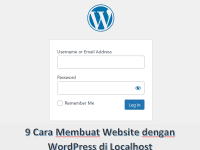√How to Upgrade Debian 11 to Debian 12 (Bookworm) via CLI – Are you a Debian user looking to upgrade your system from Debian 11 to the latest release, Debian 12, also known as Bookworm? Upgrading your operating system can be an essential step to ensure you have access to the latest features, security patches, and improvements. In this article, we will guide you through the process of upgrading Debian 11 to Debian 12 via the command line interface (CLI).
In this article, we will discuss the step-by-step process of upgrading Debian 11 (Bullseye) to Debian 12 (Bookworm) using the command-line interface (CLI). The upgrade process is straightforward and can be easily performed by following the instructions provided below. So, let’s dive in and explore the exciting world of Debian upgrades!
Understanding Debian 11 (Bullseye) and Debian 12 (Bookworm)

Debian 11, codenamed “Bullseye,” is a stable version of the Debian operating system released in August 2021. It provides a reliable and secure foundation for various applications and workloads. On the other hand, Debian 12, codenamed “Bookworm,” is the upcoming release, expected to provide new features, improvements, and updated packages.
Preparing for the Upgrade
Before proceeding with the upgrade, it is crucial to prepare your system adequately. Here are some essential steps to follow:
- Ensure that you have a stable internet connection.
- Take note of any custom configurations or changes you have made.
- Verify that your system meets the minimum requirements for Debian 12.
Also Read : Simple Steps How to Install Docker Engine on CentOS 8
Backing Up Your Data
To avoid any data loss during the upgrade process, it is recommended to back up your important files, databases, and configurations. Create a copy of your data on an external storage device or cloud storage service.
Updating Package Repositories
Before initiating the upgrade, update your package repositories to ensure you have the latest versions of software packages. Open the terminal and execute the following command:
sudo apt update
Upgrading Debian 11 to Debian 12
To begin the upgrade process, run the following command in the terminal:
sudo apt full-upgrade
Follow the on-screen instructions and confirm the upgrade when prompted. The upgrade process might take some time, depending on your internet connection speed and system performance.
Resolving Conflicts and Dependencies
During the upgrade, you might encounter conflicts or dependencies that need to be resolved. Debian’s package manager, apt, will guide you through the process and offer possible solutions. Review the suggestions carefully and select the appropriate options to proceed.
Removing Obsolete Packages
After the upgrade is complete, it’s a good practice to remove any obsolete packages that are no longer needed. Run the following command to perform an automatic cleanup:
sudo apt autoremove
Updating Configuration Files
During the upgrade, some configuration files might be updated with new defaults. If you have customized any configuration files, the upgrade process will prompt you to review the changes and decide whether to keep your modifications or use the new defaults.
Verifying the Upgrade
Once the upgrade process is finished, it is crucial to verify that your system is running Debian 12. Open a terminal and execute the following command to check the Debian version:
lsb_release -a
If the output displays Debian 12, congratulations! You have successfully upgraded your system.
Cleaning Up the System
To ensure your system is clean and optimized, remove any unnecessary files and temporary packages. Run the following command:
sudo apt clean
Rebooting and Finalizing the Upgrade
To apply any remaining changes and complete the upgrade, reboot your system. Execute the following command:
sudo reboot
Post-Upgrade Tasks
After the system restarts, there are a few post-upgrade tasks you should consider:
- Test your applications and ensure they function correctly.
- Reapply any custom configurations or changes you had previously made.
- Install additional software or packages required for your workflow.
Troubleshooting Common Issues
In case you encounter any issues during the upgrade process or face compatibility problems after the upgrade, refer to the Debian documentation or search for solutions on Debian forums and communities.
Enjoying Debian 12 (Bookworm)
Congratulations! You have successfully upgraded your Debian 11 system to Debian 12. Enjoy exploring the latest features, improvements, and packages offered by Debian 12 (Bookworm).
Conclusion
Upgrading Debian from one major release to another is a straightforward process if you follow the correct steps. In this article, we discussed the step-by-step procedure of upgrading Debian 11 (Bullseye) to Debian 12 (Bookworm) using the command-line interface (CLI). Remember to back up your data, update package repositories, resolve conflicts, and perform post-upgrade tasks. By following these guidelines, you can enjoy the latest features and enhancements offered by Debian 12.
FAQs
1. Is it necessary to back up my data before upgrading Debian? Yes, backing up your data is crucial to avoid any potential loss during the upgrade process. It is always recommended to have a backup of your important files and configurations.
2. Can I upgrade Debian using a graphical user interface (GUI) instead of the command line? Yes, Debian can also be upgraded using a GUI. However, in this article, we focused on the command-line interface (CLI) method for simplicity and efficiency.
3. What should I do if I encounter conflicts or dependencies during the upgrade? During the upgrade process, Debian’s package manager, apt, will provide possible solutions to resolve conflicts or dependencies. Carefully review the suggestions and select the appropriate options.
4. How can I verify the Debian version after the upgrade? To check the Debian version, open a terminal and execute the following command: lsb_release -a. If the output displays Debian 12, the upgrade was successful.
5. Can I downgrade from Debian 12 to Debian 11? Downgrading from Debian 12 to Debian 11 is not officially supported. It is recommended to perform a clean installation of Debian 11 if you wish to revert to the previous version.




